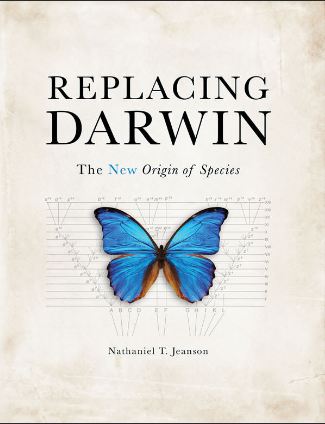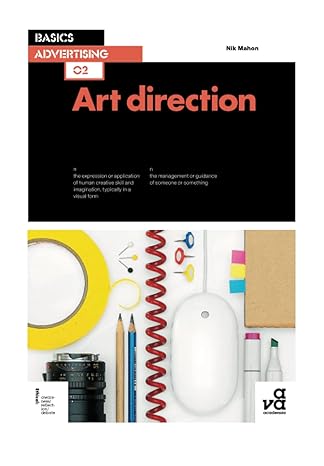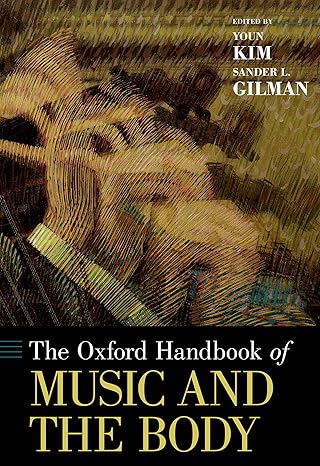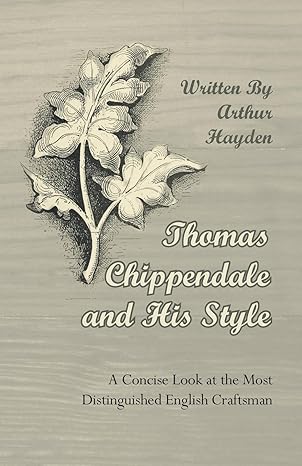In technical terms, this view led to very specific conclusions in two arenas. Since species fit their locales so well, it would seem that they were made for their individual habitats — that is, that they were created separate and distinct from other species. is implied that species do not become other species — a view known as species’ fixity. Conversely, since species appear to have been made for their individual habitats, it would seem that they have always been in their current locations. us, in the arena of geography, the design argument implied the fixity of species’ locations. In jigsaw puzzle terms, it was as if each species formed its own isolated puzzle. Environmental clues might decorate the outer edges of each species’ puzzle. But, rather than connect different species’ puzzles to one another, these clues seemed to separate the puzzles. With few pieces in hand, this view was easy to maintain. e absence of obvious connecting pieces between puzzles produced a convincing set of isolated images. Nevertheless, due to the fact that many pieces were still waiting to be discovered, the potential for massive overhaul lingered. By 1859, Darwin and his contemporaries had discovered many new pieces to these puzzles. Drawing on the growing knowledge in the fields of biogeography (i.e., the geographic distribution of species around the globe), anatomy, physiology, embryology, geology, and paleontology, Darwin began to see connections where prior investigators saw only empty space.6 Eventually, Darwin proposed that all species evolved from one or a few common ancestors — a massive paradigm shift. Because of the unusual nature of the puzzle of the origin of species, paradigm shifts are inevitable. Like the 18th century, the scope of species diversity in Darwin’s day was a fraction of today’s variety. In 1859, the scientific community had no knowledge of the majority of species we have now documented. With over 1.6 million7 plant, animal, fungal, and bacterial species currently known, hundreds of thousands of pieces were missing from Darwin’s puzzle.8 With Darwin barely 100 years removed from Linnaeus’ foundational work, this fact shouldn’t be surprising. Darwin didn’t compensate for this ignorance of species diversity with any special abilities. His lifespan wasn’t any longer than the average lifespan today. He observed the world for 73 years. And then he died. Furthermore, in those 73 years, he was subject to the technology of the 1800s. He couldn’t travel the globe as easily as we do. Without the information exchange facilitated by the Internet, he couldn’t benefit as easily from the travels and discoveries of others. Yet Darwin tried to tackle one of the biggest questions in biology. Since 1859, we’ve had time to reevaluate his picture — much more time than he had to propose and appraise it. We’ve also had more space. Today, travel is virtually unrestricted. Few corners of the world have remained recalcitrant to scientific exploration. Furthermore, the Internet makes information sharing faster than ever before. A global community of millions9 of scientists can pool their resources and build on one another’s work. ough lifespans have changed little, the cumulative observations of these scientists have built an unprecedented body of knowledge on the diversity and operation of life. Consequently, the puzzle image has changed. ree developments have led the way. First, after Darwin wrote On the Origin of Species, an entire field of science was born — and then matured. Unlike any other field of science, this field directly constrains and guides the answer to the origin of species. Consequently, it’s the most relevant field to our question. You could say that the edge pieces of the puzzle have finally been found. Second, premature conclusions were corrected. Anyone who has gotten stuck trying to put together a puzzle without a box cover and without edge pieces would do what Darwin did — they would test piece after piece until they found a plausible connection. However, without the constraints of a box cover image and of edge pieces, it’s easy to link pieces where no link exists. Connections that initially appear plausible eventually give way to the correct links, once additional pieces are found. Darwin made many such premature links. Since 1859, we’ve been able to unlock some of the connections that he erroneously made, while cementing correct ones. ird, in the last few years, the critical corner pieces were found. Several remarkable scientific discoveries were made — ones entirely unanticipated by the trajectory of discoveries prior. With these pieces in hand, the framework of the puzzle and the existing connections among pieces have been reoriented. Individually, each of these developments carried minor significance. By analogy, if you were trying to put a puzzle together, the discovery of a few edge pieces would be helpful. But it wouldn’t be earth-shattering. Conversely, if you found a corner piece, this discovery would be fantastic. But if the remaining pieces have been forced together in clumsy and incorrect ways, the corner would do little good. Finally, if all you did was unlock a few misconnected pieces, you would rejoice in the removal of barriers to progress. But the happiness of this success would soon be outweighed by the intimidating scope of the remaining task. In isolation, these discoveries would do little to reveal the final image. Together, they produced a compelling picture of how species came to be. To be sure, large chunks of the puzzle still need to be filled in. Having the corner pieces, edge pieces, and a couple of correctly connected center pieces is a huge step forward. But significant holes in the puzzle remain.10 Explaining in detail the origin of every species that ever lived is a monstrous undertaking. Much work remains to be done. Nevertheless, the puzzle picture that we possess today is far different from the one that Darwin created. And it is far superior. It puts the far reaches of the globe — and the species that they contain — into an image that is as captivating as it is surprising. is book tells the story of how this picture came to be. * Unless otherwise noted in this book, when I use the term species, I am using it in the biological sense — in other words, as a formal unit of classification. Part One A Field Is Born S Chapter 2 The Secret of Life weating over a large, unassembled jigsaw puzzle, I take deliberate steps to simplify the vexing challenge. First, I search for the edge pieces. Once I’ve found them all, it’s a fairly simple task of trial and error to connect them. Far fewer possible connections exist among these pieces than among the center pieces. Furthermore, once connected, they provide an enormously helpful framework in which to connect the rest of the puzzle. If my puzzle came without a box cover, the edges would be doubly useful. Edges limit the amount of possible horizontal and vertical connections among the center pieces. is saves me the enormous frustration that follows endless trial and error of unassembled center pieces. Edges also naturally suggest how the final image will look. Even though each piece contains a tiny part of the whole image, I can sense the final subject matter just by looking at the edge pieces. In the assembly of a jigsaw puzzle, the identification of edge pieces is a major step forward. Since species are not literal jigsaw puzzles, the biological analogy for edge pieces might not be obvious. e parallel becomes clearer upon brief reflection. Consider species with which we are familiar. We recognize zebras by their stripes, elephants by their trunks, giraffes by their long necks, bald eagles by the color of the feathers on their heads, and monarch butterflies by the patterns on their gossamer wings. Species are defined by their traits. is is true across all life. Mammals, reptiles, birds, amphibians, fish, starfish, sea urchins, crustaceans, arachnids, insects, worms of all sorts, shellfish, octopi, snails, corals, jellyfish, sponges, mosses, ferns, conifers, grasses, orchids, fruit trees, fungi, algae, bacteria, and all the other life forms on earth possess unique combinations of traits. ough some features require a microscope to visualize, traits define species. erefore, the question of the origin of species is a question of the origin of traits. If you want to know the origin of zebras, you need to discover the origin of stripes. e origin of elephants is bound up in the origin of trunks. Giraffe origins are inextricable from the origin of long necks. e origin of eagles goes hand in hand with the origin of white feathers. Butterfly history is read off the history of butterfly wing patterns. e origin of the rest of the species is found in the origin of the traits that define them. e solution to the origin of traits represents the hard constraints on the origin of species — the edge pieces of the puzzle. In 1859, zero edge pieces were known. With careful reflection, the reason for this is easy to grasp. For example, if you wanted to discover the origin of these traits, you could begin by watching how they behave each generation. However, unlike humans, species don’t keep written records of their family trees. us, as a first step, you might start by investigating human family trees. e simplest place to start is your own family tree. Perhaps you recognize your father’s chin in your jaw. You might investigate how far back on your family tree you can trace this chin shape. However, if you’re like me, your family tree is probably small. Going back further than a few generations, I don’t know who my relatives are. If your tree is like mine, your ability to examine trait behavior is severely limited by your ignorance of your ancestors. Your attempts to track traits might encounter a second hurdle. If your family tree is small, you might compensate by tracing additional family trees. In doing so, you’d probably have to follow more traits than chin shape. For example, you might document the behavior of red hair and freckles. If you did, you might observe that, on occasion, the trait disappears from a family tree. A red-headed parent might have no red-headed offspring. Or a great-grandparent might have red hair, but several generations of descendants might not. As the scope of your investigation expands, you might find several traits that behave in odd and inexplicable ways. ese idiosyncrasies apply to both living and extinct species. In fact, when fossils are part of the equation, the problems multiply. Unlike recorded family trees, fossils have no explicit genealogical connection to anything alive today. Ancestral relationships have to first be inferred from indirect data before trait behavior can be tracked. Even more troubling, the placement of fossils on family trees requires implicit assumptions about how traits behave. Assuming a mode of inheritance to prove a mode of inheritance is circular reasoning. In other words, fossils cannot inform how traits behave. If you had access to a microscope, you’d discover the most inexplicable behavior of all. All traits are erased each generation — and then rebuilt. When sperm meets egg, the visible features that define multicellular species are not present. Instead, these characteristics arise via the process of development. In summary, if you rigorously tracked the behavior of visible traits, you’d discover an intimidating number of paradoxes. ese paradoxes would raise a host of perplexing questions. Do traits form spontaneously? Can they be destroyed? Can they be changed? If so, how much can they be changed? Are traits blended? Particulate? Inherited as a whole? Separated into units? Independent? Interdependent?1 Consider the ramifications of this uncertainty. If traits can appear and disappear, how could you trace species’ ancestry? What markers would you use to fill in the family tree? Furthermore, if all traits are rebuilt every generation, can any species become any other species? Do any constraints on change exist? Might a fish spontaneously spawn a spider? Without an answer to the mystery of heredity, the origin of species would be an enigma. When Darwin wrote On the Origin of Species, paradoxes — not edge pieces of the puzzle — were all that the scientific community possessed. e first steps toward resolving these paradoxes were taken in 1865 — six years after Darwin’s seminal publication. An Austrian monk, Gregor Mendel (Figure 2.1), solved the paradoxes of family trees. Like nearly every other species, his subject of study — pea plants — did not keep written records of inheritance. So Mendel did it for them.
چکیده فارسی
از نظر فنی، این دیدگاه منجر به نتایج بسیار مشخصی در دو عرصه شد. از آنجایی که گونهها به خوبی با مکانهایشان مطابقت دارند، به نظر میرسد که آنها برای زیستگاههای فردی خود ساخته شدهاند - یعنی جدا و متمایز از سایر گونهها ایجاد شدهاند. به این معناست که گونه ها به گونه های دیگر تبدیل نمی شوند - دیدگاهی که به عنوان ثابت بودن گونه ها شناخته می شود. برعکس، از آنجایی که به نظر می رسد گونه ها برای زیستگاه های فردی خود ساخته شده اند، به نظر می رسد که آنها همیشه در مکان های فعلی خود بوده اند. بنابراین، در عرصه جغرافیا، استدلال طراحی دلالت بر ثابت بودن مکان گونه ها داشت. به تعبیر پازل، گویی هر گونه پازل جدا شده خود را تشکیل می دهد. سرنخ های محیطی ممکن است لبه های بیرونی پازل هر گونه را تزئین کنند. اما، به جای اتصال پازل های گونه های مختلف به یکدیگر، به نظر می رسید این سرنخ ها پازل ها را از هم جدا می کنند. با چند قطعه در دست، نگهداری از این نمای آسان بود. فقدان قطعات اتصال آشکار بین پازل ها مجموعه ای متقاعد کننده از تصاویر مجزا را ایجاد کرد. با این وجود، با توجه به این واقعیت که بسیاری از قطعات هنوز در انتظار کشف بودند، پتانسیل تعمیرات اساسی گسترده باقی ماند. تا سال 1859، داروین و معاصرانش قطعات جدید بسیاری را برای این پازل ها کشف کردند. داروین با تکیه بر دانش رو به رشد در زمینههای جغرافیای زیستی (یعنی توزیع جغرافیایی گونهها در سراسر جهان)، آناتومی، فیزیولوژی، جنینشناسی، زمینشناسی و دیرینهشناسی، شروع به دیدن ارتباطاتی کرد که محققان قبلی فقط فضای خالی را میدیدند. داروین پیشنهاد کرد که همه گونه ها از یک یا چند اجداد مشترک تکامل یافته اند - یک تغییر پارادایم عظیم. به دلیل ماهیت غیرمعمول پازل منشاء گونه ها، تغییر پارادایم اجتناب ناپذیر است. مانند قرن هجدهم، دامنه تنوع گونه ها در زمان داروین کسری از تنوع امروزی بود. در سال 1859، جامعه علمی از اکثر گونه هایی که ما اکنون مستند کرده ایم، هیچ اطلاعی نداشتند. با بیش از 1.6 میلیون7 گونه گیاهی، حیوانی، قارچی و باکتریایی که در حال حاضر شناخته شده است، صدها هزار قطعه از پازل داروین گم شده بود. داروین این ناآگاهی از تنوع گونه ها را با هیچ توانایی خاصی جبران نکرد. طول عمر او بیشتر از میانگین عمر امروزی نبود. او به مدت 73 سال جهان را مشاهده کرد. و سپس درگذشت. علاوه بر این، در آن 73 سال، او تابع فناوری دهه 1800 بود. او نمیتوانست به راحتی ما در سراسر جهان سفر کند. بدون تبادل اطلاعات تسهیل شده توسط اینترنت، او نمی توانست به راحتی از سفرها و اکتشافات دیگران سود ببرد. با این حال داروین سعی کرد به یکی از بزرگترین سوالات زیست شناسی بپردازد. از سال 1859، ما زمان داریم تا تصویر او را دوباره ارزیابی کنیم - بسیار بیشتر از زمانی که او برای پیشنهاد و ارزیابی آن داشت. فضای بیشتری هم داشتیم امروزه سفر تقریباً بدون محدودیت است. تعداد کمی از نقاط جهان نسبت به اکتشافات علمی سرکش باقی مانده اند. علاوه بر این، اینترنت به اشتراک گذاری اطلاعات را سریعتر از همیشه می کند. یک جامعه جهانی متشکل از میلیونها دانشمند میتوانند منابع خود را جمع کنند و بر روی کار یکدیگر بسازند. با وجود اینکه طول عمر کمی تغییر کرده است، مشاهدات انباشته این دانشمندان مجموعه بی سابقه ای از دانش را در مورد تنوع و عملکرد حیات ایجاد کرده است. در نتیجه، تصویر پازل تغییر کرده است. تحولات سه گانه راه را هدایت کرده است. ابتدا، پس از اینکه داروین درباره منشأ گونه ها نوشت، یک رشته علمی کامل متولد شد - و سپس به بلوغ رسید. برخلاف هر رشته علمی دیگری، این رشته مستقیماً پاسخ به منشأ گونه ها را محدود و راهنمایی می کند. در نتیجه، مرتبط ترین زمینه با سؤال ما است. می توان گفت بالاخره تکه های لبه پازل پیدا شدند. دوم، نتیجه گیری های زودرس تصحیح شد. هرکسی که در تلاش برای کنار هم قرار دادن یک پازل بدون پوشش جعبه و بدون قطعات لبه گیر کرده باشد، همان کاری را انجام میدهد که داروین انجام میدهد - آنها قطعهای پشت سر هم آزمایش میکنند تا زمانی که یک ارتباط قابل قبول پیدا کنند. با این حال، بدون محدودیت تصویر جلد جعبه و قطعات لبه، پیوند دادن قطعات در جایی که هیچ پیوندی وجود ندارد آسان است. اتصالاتی که در ابتدا محتمل به نظر می رسند، در نهایت پس از یافتن قطعات اضافی، جای خود را به پیوندهای صحیح می دهند. داروین بسیاری از این پیوندهای زودرس را ایجاد کرد. از سال 1859، ما توانستیم قفل برخی از اتصالاتی را که او به اشتباه ایجاد کرده بود، باز کنیم، در حالی که اتصالات صحیح را تقویت کردیم. ثالثاً، در چند سال گذشته، قطعات حساس گوشهای پیدا شدند. چندین اکتشاف علمی قابل توجه انجام شد - اکتشافاتی که در مسیر اکتشافات قبلی کاملاً پیش بینی نشده بودند. با در دست داشتن این قطعات، چارچوب پازل و ارتباطات موجود بین قطعات تغییر جهت داده شده است. به طور جداگانه، هر یک از این تحولات اهمیت جزئی داشتند. به قیاس، اگر میخواهید یک پازل را کنار هم بچینید، کشف چند قطعه لبه مفید خواهد بود. اما این زمین لرزان نخواهد بود. برعکس، اگر یک قطعه گوشه ای پیدا کنید، این کشف فوق العاده خواهد بود. اما اگر قطعات باقیمانده به روش های ناشیانه و نادرست به هم چسبیده باشند، گوشه فایده چندانی ندارد. در نهایت، اگر تنها کاری که انجام دادید باز کردن قفل چند قطعه نادرست بود، از برداشتن موانع پیشرفت خوشحال خواهید شد. اما شادی این موفقیت به زودی با دامنه ترسناک کار باقی مانده بیشتر خواهد شد. بهطور مجزا، این اکتشافات نمیتوانند تصویر نهایی را آشکار کنند. آنها با هم تصویر قانع کننده ای از چگونگی پیدایش گونه ها ایجاد کردند. برای اطمینان، تکه های بزرگ پازل هنوز باید پر شوند. داشتن قطعات گوشه، قطعات لبه، و چند قطعه مرکزی که به درستی متصل شده اند گام بزرگی به جلو است. اما حفرههای قابل توجهی در پازل باقی مانده است.10 توضیح دقیق منشأ هر گونهای که تا به حال زندگی کردهاند، کاری هیولاگونه است. کار زیادی برای انجام باقی مانده است. با این وجود، تصویر معمایی که امروزه در اختیار ماست، بسیار متفاوت از تصویری است که داروین خلق کرده است. و به مراتب برتر است. دوردستهای کره زمین - و گونههایی که در آنها وجود دارد - را در تصویری قرار میدهد که به همان اندازه جذاب و شگفتانگیز است. این کتاب داستان چگونگی پیدایش این تصویر را بیان می کند. * در صورتی که در این کتاب طور دیگری ذکر شده باشد، وقتی از واژه گونه استفاده می کنم، آن را به معنای بیولوژیکی به کار می برم - به عبارت دیگر، به عنوان یک واحد رسمی طبقه بندی. بخش اول A Field Is Born S فصل 2 راز زندگی که بر روی یک پازل بزرگ و مونتاژ نشده خیس می شود، من اقدامات عمدی را برای ساده کردن چالش آزاردهنده برمی دارم. ابتدا قطعات لبه را جستجو می کنم. وقتی همه آنها را پیدا کردم، اتصال آنها یک کار نسبتاً ساده آزمون و خطا است. اتصالات احتمالی بسیار کمتری در بین این قطعات نسبت به قطعات مرکزی وجود دارد. علاوه بر این، پس از اتصال، آنها چارچوب بسیار مفیدی را برای اتصال بقیه پازل فراهم می کنند. اگر پازل من بدون جلد جعبه می آمد، لبه ها دوچندان مفید می شد. لبه ها میزان اتصالات افقی و عمودی ممکن را در میان قطعات مرکزی محدود می کنند. من را از ناامیدی عظیمی که به دنبال آزمون و خطای بی پایان قطعات مرکزی مونتاژ نشده به وجود می آید نجات می دهد. لبه ها نیز به طور طبیعی نشان می دهند که تصویر نهایی چگونه به نظر می رسد. حتی اگر هر قطعه شامل بخش کوچکی از کل تصویر است، من می توانم موضوع نهایی را فقط با نگاه کردن به قطعات لبه احساس کنم. در مونتاژ یک پازل، شناسایی قطعات لبه یک گام بزرگ به جلو است. از آنجایی که گونه ها به معنای واقعی کلمه پازل نیستند، قیاس بیولوژیکی برای قطعات لبه ممکن است واضح نباشد. موازی با تأمل کوتاه واضح تر می شود. گونه هایی را در نظر بگیرید که با آنها آشنا هستیم. گورخرها را از راه راههایشان، فیلها را با خرطومهایشان، زرافهها را با گردنهای بلندشان، عقابهای کچل را با رنگ پرهای روی سرشان و پروانههای پادشاه را با نقشهای روی بالهایشان میشناسیم. گونه ها با ویژگی هایشان تعریف می شوند. این در تمام زندگی صادق است. پستانداران، خزندگان، پرندگان، دوزیستان، ماهی ها، ستاره های دریایی، خارپشت های دریایی، سخت پوستان، عنکبوتیان، حشرات، انواع کرم ها، صدف ها، اختاپوس ها، حلزون ها، مرجان ها، چتر دریایی، اسفنج ها، خزه ها، سرخس ها، درختان مخروطی، علف ها، قارچها، جلبکها، باکتریها و سایر اشکال حیات روی زمین دارای ترکیبات منحصر به فردی از صفات هستند. اگرچه برخی از ویژگیها برای تجسم به میکروسکوپ نیاز دارند، ویژگیها گونهها را تعریف میکنند. بنابراین، مسئله منشأ گونه ها، مسئله منشأ صفات است. اگر می خواهید منشا گورخرها را بدانید، باید منشاء راه راه ها را کشف کنید. منشاء فیل ها به منشا خرطوم ها بستگی دارد. منشا زرافه از منشاء گردن های بلند جدایی ناپذیر است. منشأ عقاب ها دست به دست هم می دهد و منشا پرهای سفید است. تاریخچه پروانه ها از تاریخچه الگوهای بال پروانه خوانده می شود. منشأ بقیه گونه ها در منشأ صفاتی است که آنها را تعریف می کند. راهحل منشأ صفات نشاندهنده محدودیتهای سخت در منشاء گونهها - قطعات لبه پازل است. در سال 1859، قطعات لبه صفر شناخته شدند. با تأمل دقیق، دلیل این امر به راحتی قابل درک است. برای مثال، اگر میخواهید منشأ این ویژگیها را کشف کنید، میتوانید با مشاهده رفتار هر نسل شروع کنید. با این حال، برخلاف انسانها، گونهها سوابق مکتوب درختان خانوادگی خود را نگه نمیدارند. ما، به عنوان اولین قدم، ممکن است با بررسی درختان خانوادگی انسان شروع کنید. ساده ترین مکان برای شروع، شجره نامه خودتان است. شاید شما چانه پدرتان را در فک خود تشخیص دهید. ممکن است بررسی کنید که چقدر پشت در شجره نامه خود می توانید این شکل چانه را ردیابی کنید. با این حال، اگر شما هم مثل من هستید، احتمالاً شجره نامه شما کوچک است. اگر به چند نسل به عقب برگردم، نمی دانم بستگان من چه کسانی هستند. اگر درخت شما مانند درخت من است، توانایی شما در بررسی رفتار صفت به دلیل ناآگاهی شما از اجدادتان به شدت محدود شده است. تلاش شما برای ردیابی صفات ممکن است با یک مانع دوم روبرو شود. اگر شجره نامه شما کوچک است، می توانید با ردیابی درختان خانوادگی اضافی جبران کنید. در انجام این کار، احتمالاً باید از ویژگی های بیشتری نسبت به شکل چانه پیروی کنید. برای مثال، ممکن است رفتار موهای قرمز و کک و مک را مستند کنید. اگر این کار را کردید، ممکن است مشاهده کنید که در مواردی، این ویژگی از یک شجره خانوادگی ناپدید می شود. یک والدین مو قرمز ممکن است فرزندی با سر قرمز نداشته باشد. یا پدربزرگ و مادربزرگ ممکن است موهای قرمز داشته باشند، اما چندین نسل از فرزندان ممکن است نداشته باشند. همانطور که دامنه تحقیقات شما گسترش می یابد، ممکن است چندین صفت را بیابید که به روش های عجیب و غریب و غیرقابل توضیح رفتار می کنند. این ویژگی های خاص هم برای گونه های زنده و هم برای گونه های منقرض شده صدق می کند. در واقع، وقتی فسیل ها بخشی از معادله باشند، مشکلات چند برابر می شوند. بر خلاف شجره نامه های ثبت شده، فسیل ها هیچ ارتباط شجره نامه ای واضحی با هیچ چیز زنده امروزی ندارند. روابط اجدادی باید ابتدا از داده های غیرمستقیم استنتاج شوند تا رفتار صفت قابل ردیابی باشد. حتی نگرانکنندهتر، قرار دادن فسیلها بر روی درختان خانوادگی مستلزم فرضیات ضمنی درباره نحوه رفتار صفات است. فرض یک حالت ارث برای اثبات یک حالت ارث، استدلال دایره ای است. به عبارت دیگر، فسیل ها نمی توانند نحوه رفتار صفات را نشان دهند. اگر به میکروسکوپ دسترسی داشتید، غیرقابل توضیح ترین رفتار را کشف می کردید. همه صفات در هر نسل پاک می شوند - و سپس بازسازی می شوند. هنگامی که اسپرم با تخمک ملاقات می کند، ویژگی های قابل مشاهده ای که گونه های چند سلولی را تعریف می کند وجود ندارد. در عوض، این ویژگی ها از طریق فرآیند توسعه به وجود می آیند. به طور خلاصه، اگر رفتار صفات قابل مشاهده را به دقت دنبال کنید، تعداد وحشتناکی از پارادوکس ها را کشف خواهید کرد. این پارادوکس ها انبوهی از سوالات گیج کننده را ایجاد می کنند. آیا صفات خود به خود شکل می گیرند؟ آیا می توان آنها را نابود کرد؟ آیا می توان آنها را تغییر داد؟ اگر بله، چقدر می توان آنها را تغییر داد؟ آیا صفات با هم ترکیب شده اند؟ ذرات؟ به طور کلی به ارث رسیده است؟ به واحدها تفکیک شده؟ مستقل؟ وابسته به هم؟1 پیامدهای این عدم قطعیت را در نظر بگیرید. اگر صفات می توانند ظاهر شوند و ناپدید شوند، چگونه می توانید اجداد گونه ها را ردیابی کنید؟ از چه نشانگرهایی برای پر کردن شجره نامه استفاده می کنید؟ علاوه بر این، اگر همه صفات در هر نسل بازسازی شوند، آیا هر گونه ای می تواند به گونه دیگری تبدیل شود؟ آیا محدودیتی برای تغییر وجود دارد؟ ممکن است یک ماهی به طور خود به خود عنکبوت تولید کند؟ بدون پاسخ به معمای وراثت، منشا گونه ها معما خواهد بود. وقتی داروین درباره منشاء گونه ها نوشت، پارادوکس ها - نه قطعات لبه پازل - تمام چیزی بود که جامعه علمی در اختیار داشت. اولین گام ها برای حل این تناقضات در سال 1865 برداشته شد - شش سال پس از انتشار مهم داروین. یک راهب اتریشی، گرگور مندل (شکل 2.1)، پارادوکس های درختان خانوادگی را حل کرد. تقریباً مانند هر گونه دیگری، موضوع مورد مطالعه او - گیاهان نخود - سوابق کتبی وراثت را حفظ نمی کرد. بنابراین مندل این کار را برای آنها انجام داد.
ادامه ...
بستن ...










